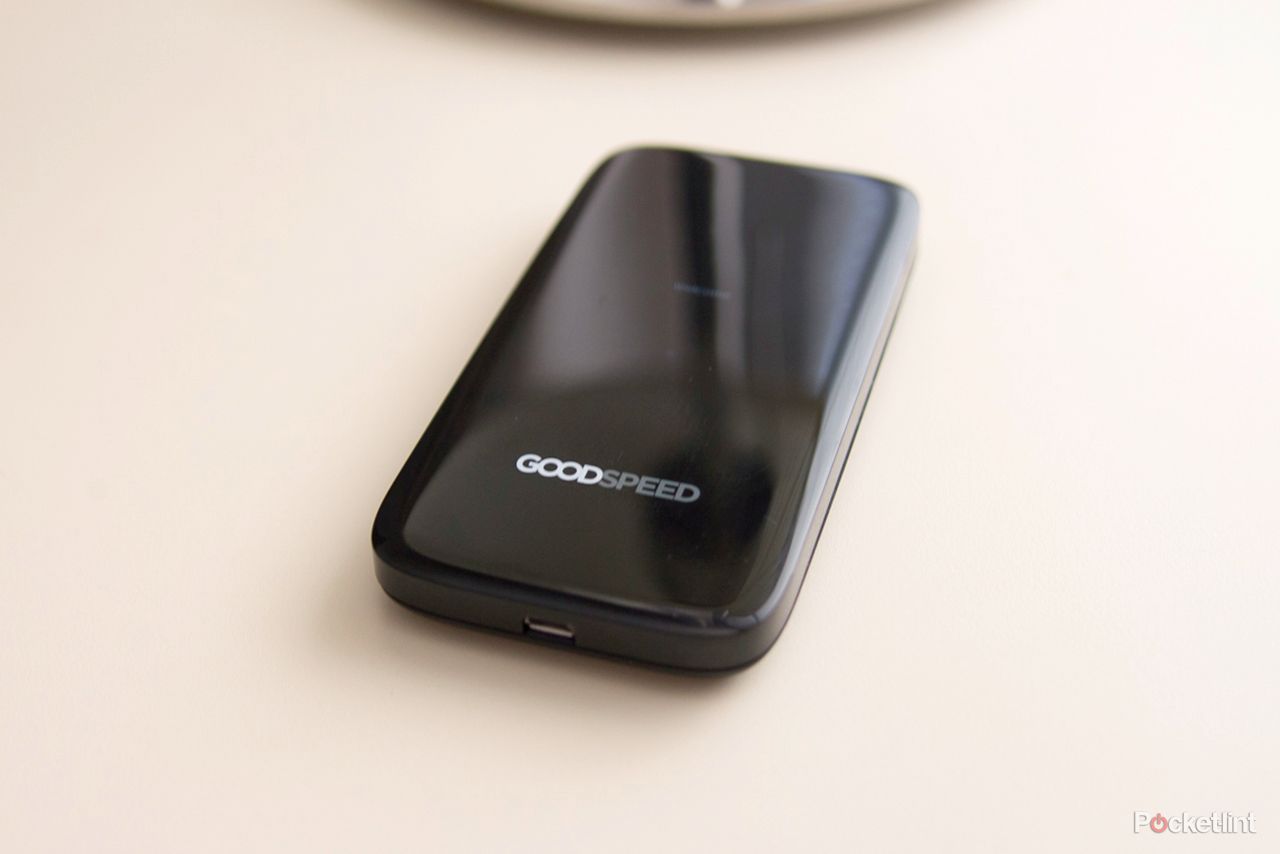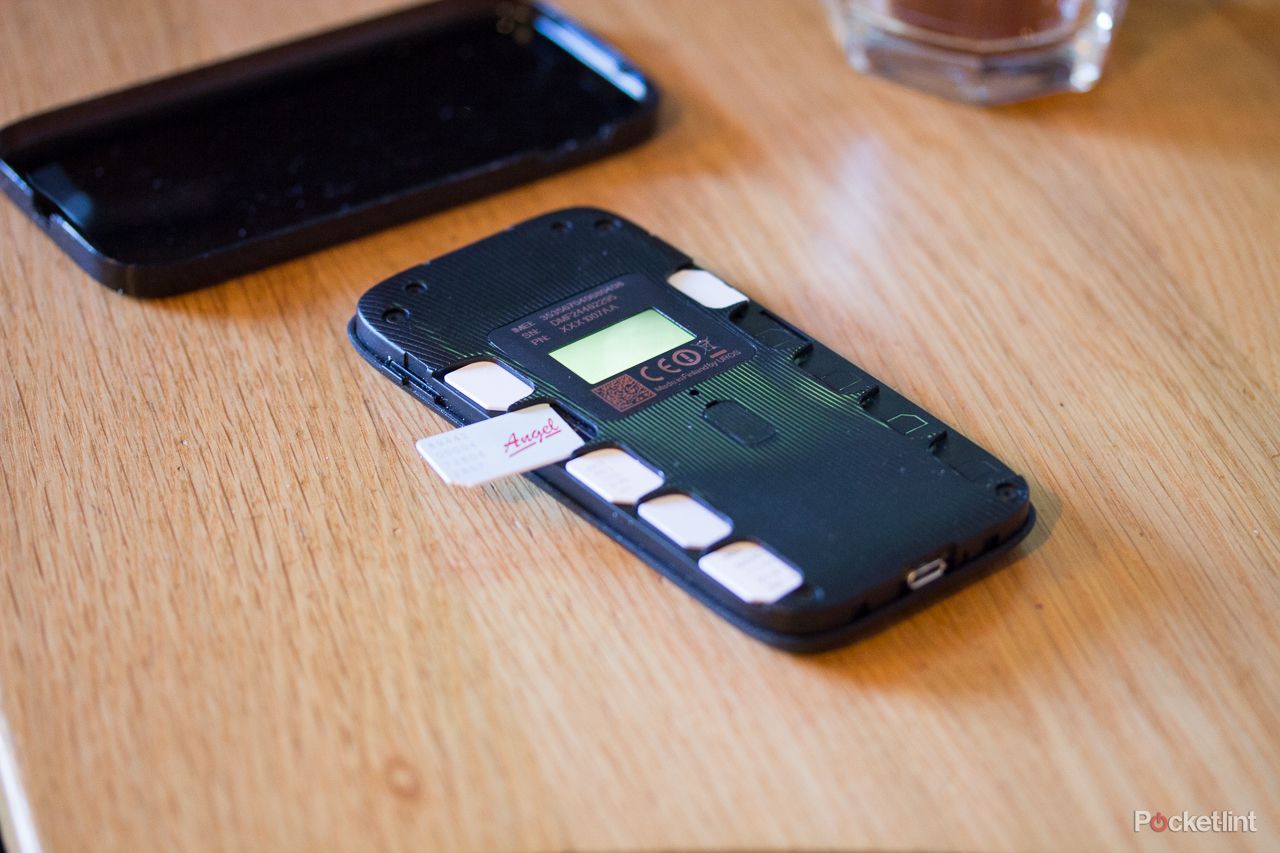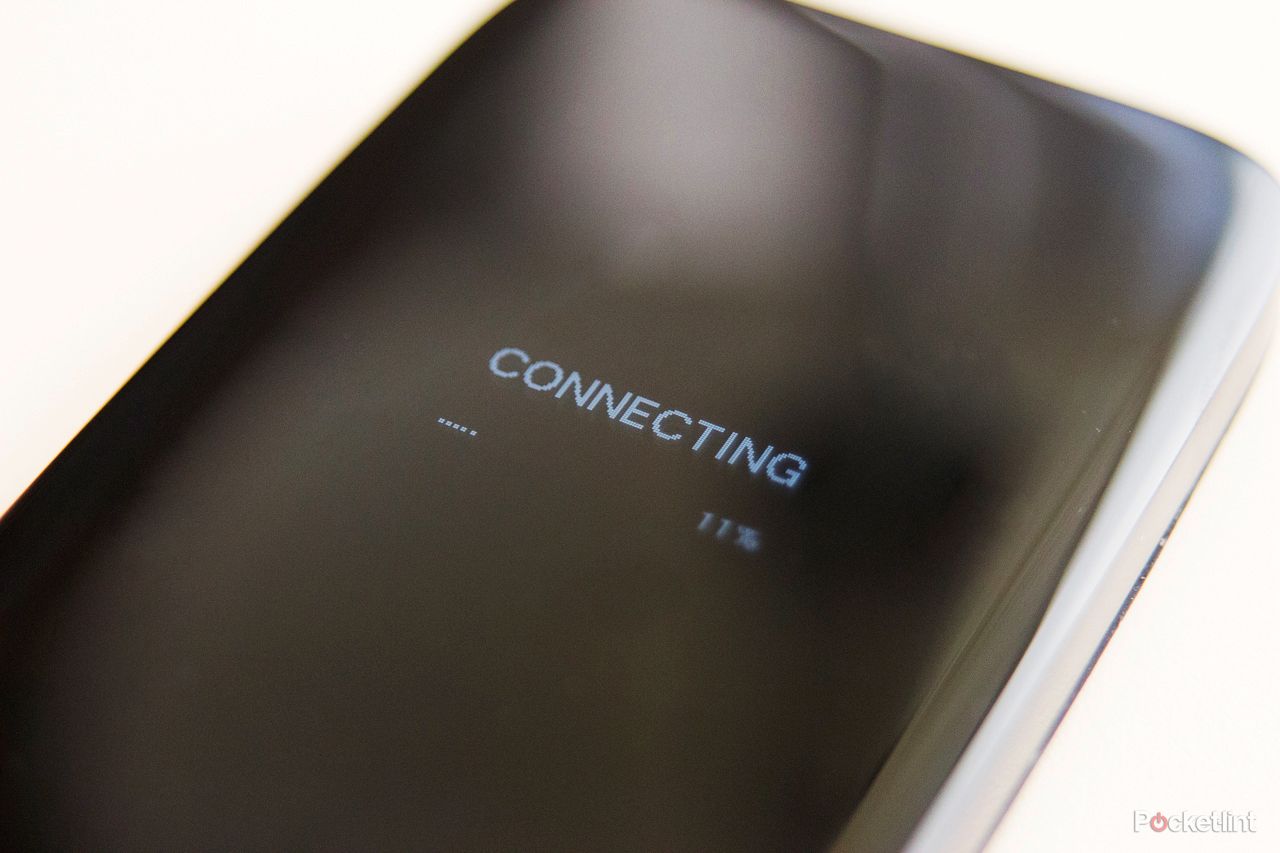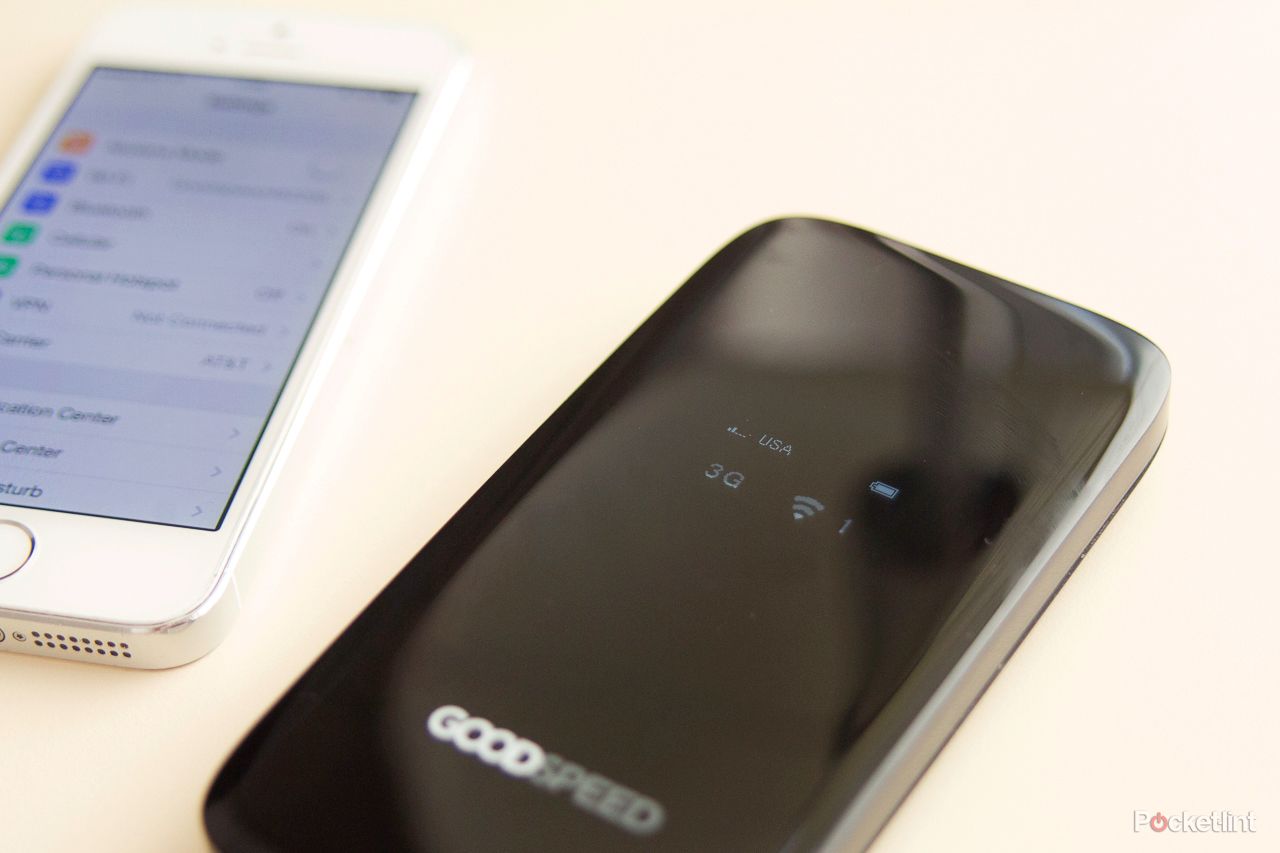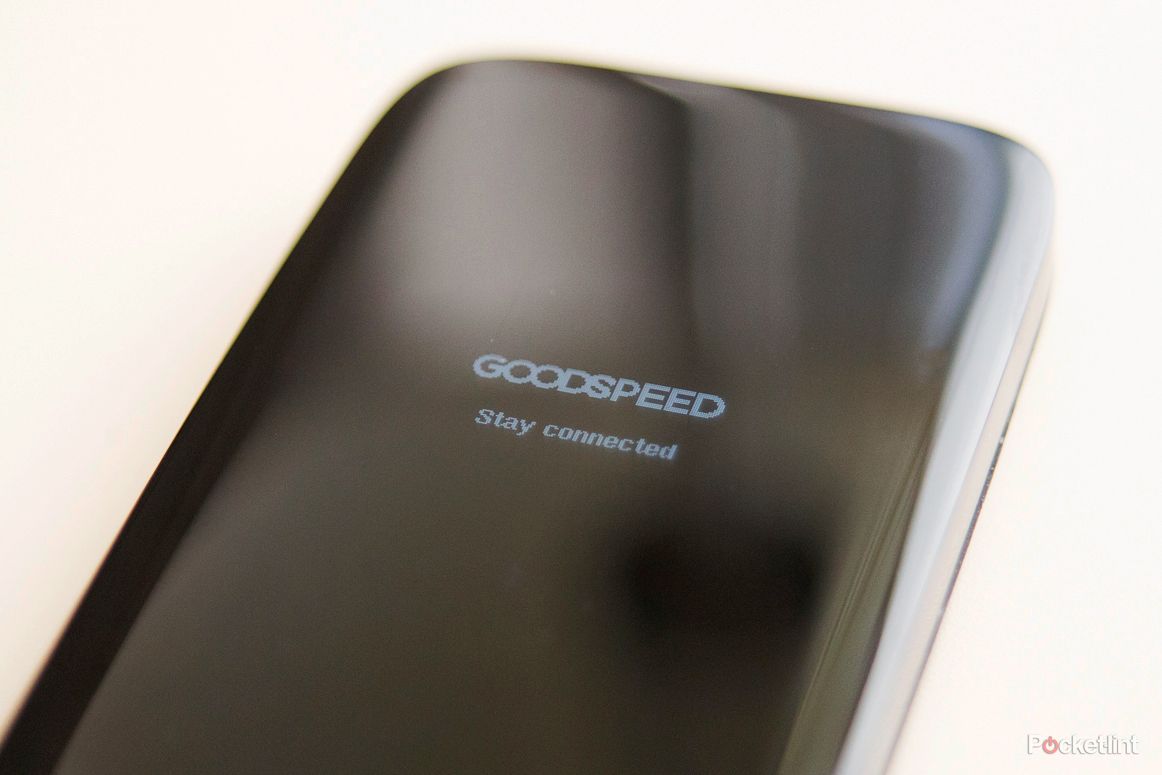The Goodspeed is a portable multi-SIM Mi-Fi hotspot designed for travellers, particularly those in the business of heading to one or multiple countries on a regular basis.
Our quick take
With the high starting price, the Goodspeed will mostly appeal to business travellers looking to curb pricey data costs or continue working beyond limited data caps imposed by many carriers. Typically Goodspeed offers SIM cards with 500MB per day caps, but some provide as much as 1GB a day.
If you're hitting multiple destinations around the globe on a regular basis, then the Goodspeed is well worth checking out. We especially like the ability to get a number of SIM cards for various destinations but then only paying for access when you go to that country. No ongoing daily costs between travel is what really makes the product appeal and once at your destination the price is very reasonable.
In the case of us here at Pocket-lint we've seen the appeal first hand from the USA to Europe and even the Far East. There have been one or two bumps along an otherwise smooth road and it's saved us heaps of cash in the process. Can't say better than that.
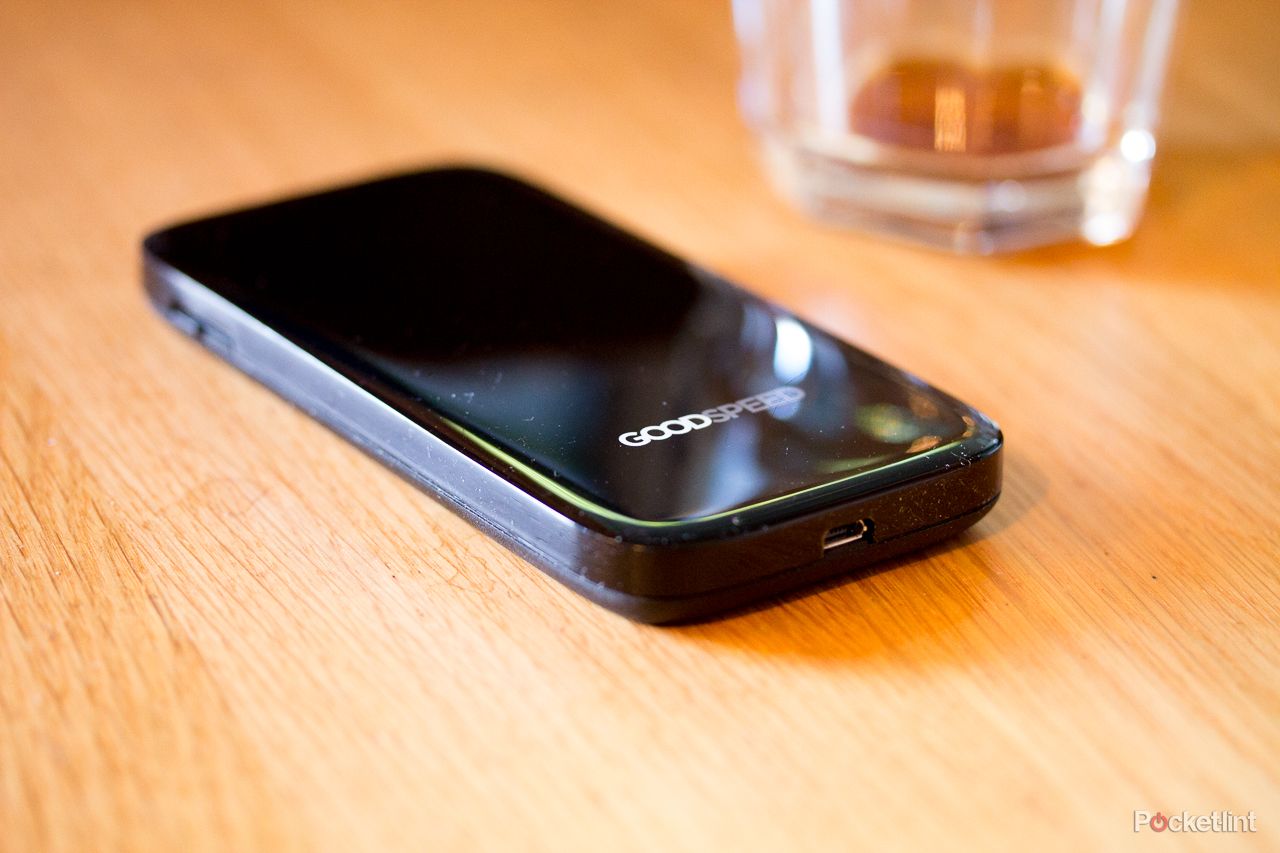
Uros Goodspeed Mi-Fi - 4.0 / 5
| FOR | AGAINST |
|---|---|
|
|
If you need mobile data wherever you are in the world then the Goodspeed could be the solution to keep those surprise bills at bay. Is this minimalist black box really as good as the company claims? We've been travelling around the globe over the past seven months to try it out in places as far as China and the USA.
What is Goodspeed?
The Goodspeed is similar to a standard Mi-Fi. The main difference with the Goodspeed is that it can host up to 10 cards instead of just the one like most Mi-Fi devices andthese country-specific cards will most likely undercut the huge expense that your personal provider would otherwise charge for overseas use.
Roughly the size of a large smartphone, the Goodspeed box measures 123mm x 63mm x 13mm and weighs 127g making it small enough to fit in a bag, but not really practical to fit in your pocket alongside a phone.
The device features a small 1-inch monochrome LCD display to provide vital stats such as your connection speed and strength, battery life and password entry.
There's a 2550mAh battery on board for up to 8 hours of continuous use, and it can achieve a full charge in approximately four hours. Our usage tallies with these claims, so there's enough juice here to get you through the equivalent of an office day while on the move.
Everything is kept to a minimum on the device with account and device settings needing to be managed via another source, such as your laptop. Setup in advance and you're good to go, although you will have to allow plenty of time for the unit to final a signal when you first turn it on at your destination.
When you buy the Goodspeed you can have it pre-loaded with SIM cards for supported countries or merely peel back the cover to reveal 10 empty slots. That will allow you to be more prepared than Phileas Fogg embarking on another 80-day voyage.
The full country list is considerable and growing all the time, but not every single place on the planet is compatible just yet. Key locations are the USA, Austrailia, Japan, Korea, India, China, Russia, much of Europe and South America.
How does it work?
Uros, the company behind the Goodspeed, has done a number of deals with carriers to effectively sub-let data on given networks when travelling, cutting out the potentially inordinate data roaming costs you might have to pay on your provider's day-to-day plan.
By purchasing a country-specific SIM card - and remember you can operate with up to 10 different ones - when you get to your final destination the Goodspeed works its way through the inserted SIM cards before settling on the best one to use.
The device itself costs around £200. Once purchased there are three packages to opt for depending on how heavy your usage is: Lite, Pro, and Business.
The Lite offering supports up to 1GB of data a day (usually 500MB for most locations) and costs €16.50 for a day pass. That's about £13.50.
If you opt for the Pro package you pay €9.90 (£8.14 approx) for the month but your day rate drops to €5.90 (£4.85 approx) in most locations (€9.90 (£8.14) in most of the southern hemisphere and, oddly, France), thus instantly making it worthwhile if you are going to be eating up data overseas for more than a day any given month. The contract can be stopped and started accordingly and where the Goodspeed really comes into its own is that you only pay for the days you use regardless of how long you leave between those days.
This is likely to be appealing to those who travel to the US from the UK every couple of months, for example, but not enough to warrant getting a dedicated US SIM. Saying that, you could just switch to Three network which offers affordable data plans that include US data as part of the package.
The Goodspeed does support the use of your own SIM when at home so you can use it as a regular Mi-Fi rather than having to pay its daily rate card and if you opt for the Pro offering you can still use localised SIM cards that you've bought yourself, thus bypassing the company's offering altogether.
The Business plan will be of no interest to solo travellers as it means taking on a minimum of five Goodspeed devices. Businesses sending multiple workers overseas may have an interest here of course.
Little trouble in big China
When we first received the Goodspeed we were travelling to China and the prospect of affordable data was a great lure. SIM card slotted in and we were ready to go. Or so we thought.
One potential issue with Goodspeed is that you really need to set it up in advance. In our haste we had arrived in Beijing before switching the device on for the first time and that caused us some problems. We needed to register the SIM, after which the Goodspeed suggested everything was fine - but there was still no connection.
At a launch event we were still unable to get a connection many hours later. But after some resets and enough time for the SIM card registration to catch up things eventually found their place and everything was operational. Long story short: ensure everything is set up before you travel, otherwise you could encounter issues like we did.
Goin' wild in Texas
Lesson learnt, we put the Goodspeed to the test over in the USA, this time with a US-enabled SIM on the Pro package. That meant 500MB of data was available per day.
Knowing that US roaming prices are expensive on our personal package, we wanted to see what the savings would be compared to our standard Vodafone contract. Different carriers provide different data plans and costs, of course, and as we mentioned before Three offers a plan that adds no additional cost to roaming in the USA. The exception to that is tethering: but with the Goodspeed you can tether to your heart's content for laptop or tablet work.
We used the Goodspeed for two days during a trip to Texas and it worked just fine and dandy. We even shared the Mi-Fi hotspot password with two of our travelling companions and told them to go wild. We tried to do likewise.
When in Austin we experienced 3.5G speeds and where happy with the download performance. The Goodspeed isn't a 4G capable device.
On the first day we hit the 500MB limit and that meant no more data. The second day we used the Goodspeed a little more sparingly for some light web surfing and to record a quick TV interview via Skype with our friends at Saxo TV. Total usage for day two was 50MB, but if we had used the same data on our personal plan it would have cost a huge amount. The 500MB wouldn't bear thinking about.
Savings galore
Looking at Vodafone's prices - and obviously other carriers will vary - the Vodafone Data Traveller package (for phones) offers 25MB a day for £5. After reaching that limit Vodafone charges £15 every 5MB (so £3 per MB). Using that tariff our combined 550MB of data usage over two days would have cost us £1510. Just about the cost of a BA premium return flight from London to Texas then.
In comparison, the cost of using the Goodspeed was two lots of a £4.85 daily pass plus the £8.14 monthly subscription, totalling £17.84. Of course the device itself costs £196 but that's a one off payment. Either way, the savings were huge, totalling £1296.43 in this particular example.
There are other options, though. If we opted for the Vodafone Data Traveller package for iPad and Wi-Fi dongles it offers 100MB for £25 a day which might suit some infrequent travellers better.
The savings aren't so dramatic in Europe, with many UK operators now allowing you to roam from as little as £3 a day. But you could still save if you are prepared to have your phone connected to the Goodspeed Wi-Fi hotspot instead of data roaming.
It's also worth bearing in mind you can connect up to five devices to the Goodspeed without having to pre-register them first. So if you want a laptop, tablet, smartphone and perhaps a friend or partner's device also linked then that's no problem.
Grumbles
There are some issues with the Goodspeed. It's a fairly large device and finding the signal for the first time in the US took around 30 minutes, while in China it took so long that, in combination with our setup issues, we had to surrender on the first day.
But that's our only real complaint: the need to wait. Goodspeed isn't like your phone where you are able to use data within moments of turning your phone on.

